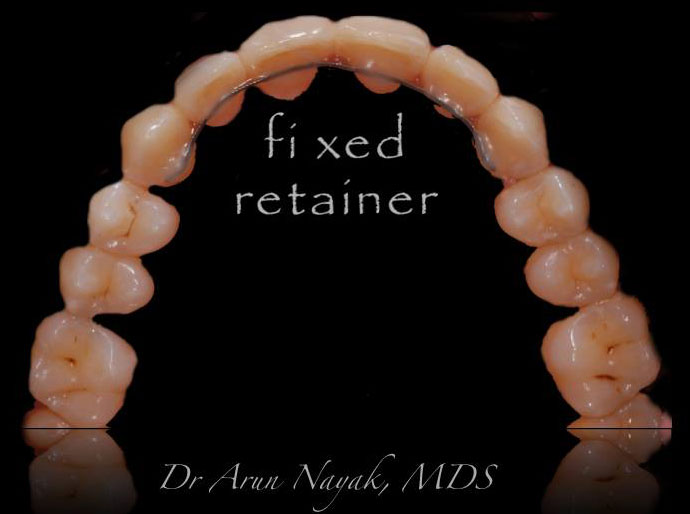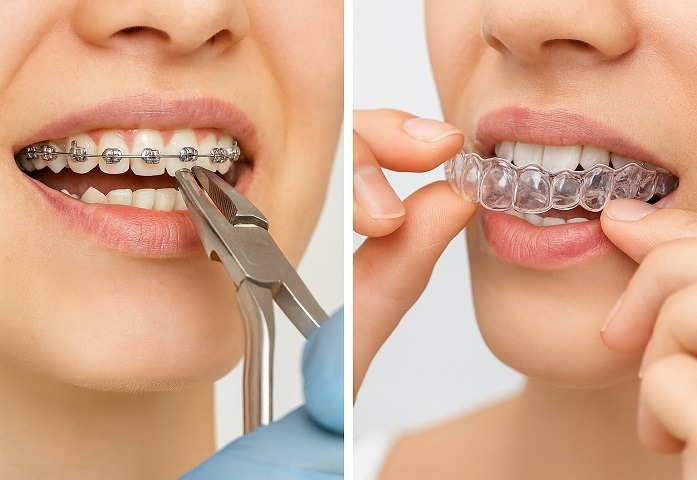Retainers are the quiet protectors of your smile. After months of braces or Invisalign, they hold teeth in their new place while gums and bones adjust. Without them, teeth relapse is common, undoing years of effort. At Fort Dental, parents often ask if their children or they themselves really need a retainer after braces? The answer is YES!
Orthodontic retention ensures smile stability after braces. Prevents the natural pull of the periodontal ligament memory from shifting teeth back.
Preventing Relapse with Retainers after Braces
Teeth have a natural memory and retainers stop this relapse. Orthodontists call this phase the dental retention phase, critical for long-term results.
When Do Orthodontists Recommend Retainers?
The day braces come off or the last aligner tray is worn. Orthodontists strongly recommend a retainer after braces or a retainer after Invisalign to lock results. The reason lies in teeth relapse prevention. The surrounding bone and ligaments need months to stabilize.
Don’t let confusion risk your smile! [Download our Fixed vs Removable Retainers PDF] – a quick, handy guide you can save, print, or share.
Types of Retainers
There are two main choices: fixed and removable.

- A fixed retainer is a thin wire bonded behind the teeth. It provides permanent retention.
- Removable options include the a) Invisalign Vivera retainer b) Essix Retainer
Detail Description about Vivera retainer
What are vivera retainers?

Vivera retainers are clear plastic retainers that help hold your teeth in place once orthodontic treatment has been completed. It is a direct copy of what the teeth look like after treatment.
You will receive 3 identical copies of the retainer, which means if you lose one, you have 2 others to wear immediately.
Wearing your retainer
When wearing your retainer, it should fit like a glove over your teeth. There should be no excess plastic sitting on your gums or pressure on the teeth.
Fitting
When fitting your retainer, always make sure you look into a mirror so that you can correctly position the retainer. Once your retainer is in the correct position, simply use your fingers to push against the plastic and the retainer will click into place.
Removal
When removing your retainer, always use your index fingernails to pull downwards on the back of the retainer. To remove the lower, use your thumbs and push up. Ensure that you always remove from the back of the retainer, this will make your retainer last longer. If you remove from the front you run the risk of putting too much pressure on the retainer and your teeth.
Wear
You will wear your retainer full time for 6 months followed by every night.
Cleaning
Your retainer should be cleaned every day with a soft toothbrush & toothpaste and warm running water (not hot water). The best time to clean your retainer is usually when you brush your teeth, as you will be near a sink and the retainer needs to be removed anyway.
As you will be wearing your retainer full time for 2 weeks, rinse your retainer under running water in-between brushing after meals. Cleaning tablets such as Retainer Brite may also be used occasionally.
Parents often ask about fixed vs removable retainers. Each has pros and cons.
- Fixed ones stay hidden and reduce daily compliance issues. Need careful hygiene. Patient has to come for a follow up check-up every 8 months to a year for a clean up.
- Removable ones are easier to clean.
The choice between fixed vs removable retainers depends on:
- Oral hygiene habits
- And the initial malocclusion before the treatment
- If the patient has a para-functional habit
How Long to Wear Retainers
Orthodontist recommends the use of the retainer to be worn full-time for the first six months after treatment, then nightly for years. While this may sound demanding, wearing them at night is easy once it becomes a habit.
The jaw bone stabilizes in 12 months, but periodontal ligament memory can last a lifetime. Night wear ensures smile stability after braces without struggle.
Common Myths About Retainers
- Some believe that once teeth feel stable, retainers are unnecessary.
- Others think a retainer after braces or Invisalign is only for teenagers.
The Facts – Dental retention phase requirements are universal. Even adults face relapse risks.
Another myth is discomfort-Invisalign vivera retainers are thin, invisible and comfortable.
Skipping Your Retainer? Get Ready for Relapse Risk
Skipping retainers can undo years of effort. Teeth relapse prevention fails when compliance drops.
Expert Orthodontist Tips: Compliance & Care
- Removable ones should be cleaned with cleaning tabs and luke warm water, never hot.
- Fixed retainers require excellent brushing and flossing to avoid plaque.
- Orthodontists at Fort Dental emphasise routine follow-ups during the dental retention phase.
- Compliance is easier when parents supervise younger children.
Retainers are not mere accessories, these are guardians of every smile. Whether it is a retainer after braces or a retainer after Invisalign, compliance decides success. At Fort Dental, countless families have witnessed how a simple routine saves years of effort. We help you select wisely between fixed vs removable retainers. We guide you in understanding how long to wear retainer after braces. And finally we assure a smooth dental retention phase that keeps smiles secure.

